Verdict on the Xiaomi 15T Pro
The Xiaomi 15T Pro continues the strengths of the T series, combining high performance with an impressive camera and an extremely bright display. In terms of build quality, the smartphone impresses with its solid chassis and IP68 certification, while battery life has been greatly improved thanks to the larger battery and more efficient processor.
The collaboration with Leica ensures very good photos, even if the ultra-wide angle and digital zoom still show weaknesses. On the software side, Xiaomi scores with long update periods and new AI functions, but lags behind the competition when it comes to sustainability and repairability. The slow USB 2.0 port and the lack of an LTPO panel also deserve criticism.
Pros
Cons
Price and availability
The Xiaomi 15T Pro can be purchased directly from the Mi Store, but it is also available from major electronics retailers such as Amazon and MediaMarkt. The smartphone launched globally in September 2025 with a starting price of around €799.99 (approximately $925 USD). Official US availability has not been announced, although the device can be found via third-party importers at comparable prices. Regional availability and warranty conditions may vary.
Table of Contents
- Verdict on the Xiaomi 15T Pro
- Specifications – Xiaomi 15T Pro
- Case - Xiaomi 15T Pro is IP68 certified
- Features – only USB 2.0 for the 15T series
- Software – six years of updates for the 15T Pro
- Communication and GNSS – Xiaomi smartphone with Wi-Fi 7
- Telephony and call quality – with offline communication support
- Cameras – strong performance from the Xiaomi 15T Pro's setup
- Accessories and warranty – optional Xiaomi Care
- Input devices and operation – 15T Pro with fast fingerprint sensor
- Display – extremely bright AMOLED for the Xiaomi 15T Pro
- Performance – Xiaomi smartphone with Dimensity 9400+
- Emissions – smartphone with dual speakers
- Battery life – smartphone with 5,500 mAh
- Notebookcheck overall rating
- Alternatives at a glance
The Xiaomi 15T Pro is the larger sibling of the Xiaomi 15T and the successor to the Xiaomi 14T Pro. Last year's compact flagship from Xiaomi already stood out for its capable camera setup, developed in collaboration with Leica, a partnership that continues this year. With the Pro model, Xiaomi places a stronger emphasis on an improved telephoto lens, while also offering several other advantages over the 15T.
Specifications – Xiaomi 15T Pro
Case - Xiaomi 15T Pro is IP68 certified
The Xiaomi 15T Pro is available in black, grey and mocha gold. At 210 grams, it is not particularly light and has a thickness of just under eight millimetres (measured: 8.15 mm; including camera: 11.4 mm).
Xiaomi has redesigned the look, particularly around the camera module, giving the smartphone a more premium appearance. Build quality is good, and the aluminium frame feels solid. However, the transition to the fibreglass composite back is noticeable to the touch and slightly rough. The display is protected by Corning Gorilla Glass 7i.
When subjected to light torsion, the 15T Pro emits a faint creak yet maintains a solid overall impression. The SIM tray sits flush with the frame, and the smartphone is IP68 certified, ensuring dust and water resistance.
Features – only USB 2.0 for the 15T series
The Xiaomi 15T Pro is available in three configurations:
12 GB RAM / 256 GB storage | €800 (around $870 USD)
12 GB RAM / 512 GB storage | €900 (around $980 USD)
12 GB RAM / 1 TB storage | €1,000 (around $1,090 USD)
Apart from the internal storage, there are no differences between the models. Given the price range, we would have liked to see a faster USB port, but otherwise the feature set is almost complete. There is no support for UWB, although Auracast is included.
Software – six years of updates for the 15T Pro
The Xiaomi 15T Pro originally shipped with Android 15 and HyperOS 2.0, but by the end of our testing it had already received the update to Google Android 16 with HyperOS 3.0.
The new version not only introduces design refinements but also enables easier data exchange with Apple devices, adds the Hyper Island feature, enhanced AI functions, an improved gallery search, and more.
Xiaomi promises six years of security updates and five years of major OS upgrades.
Sustainability
Xiaomi does not provide specific information regarding the smartphone's sustainability. The device comes in largely plastic-free packaging.
User repairability is not supported, and the phone can only be sent in or taken to an authorised service partner for repairs.
Communication and GNSS – Xiaomi smartphone with Wi-Fi 7
The Xiaomi 15T Pro features modern connectivity modules including Wi-Fi 7 and 5G, with extensive frequency band support across all regions. Mobile reception in urban areas is strong and leaves little to be desired.
| Networking | |
| Xiaomi 15T Pro | |
| iperf3 transmit AXE11000 | |
| iperf3 receive AXE11000 | |
| iperf3 transmit AXE11000 6GHz | |
| iperf3 receive AXE11000 6GHz | |
| Xiaomi Poco F7 Ultra | |
| iperf3 transmit AXE11000 | |
| iperf3 receive AXE11000 | |
| Samsung Galaxy S25+ | |
| iperf3 transmit AXE11000 | |
| iperf3 receive AXE11000 | |
| iperf3 transmit AXE11000 6GHz | |
| iperf3 receive AXE11000 6GHz | |
| Nothing Phone (3) | |
| iperf3 transmit AXE11000 | |
| iperf3 receive AXE11000 | |
| iperf3 transmit AXE11000 6GHz | |
| iperf3 receive AXE11000 6GHz | |
| Realme GT 7 | |
| iperf3 transmit AXE11000 | |
| iperf3 receive AXE11000 | |
| Xiaomi 14T Pro | |
| iperf3 transmit AXE11000 | |
| iperf3 receive AXE11000 | |
| iperf3 transmit AXE11000 6GHz | |
| iperf3 receive AXE11000 6GHz | |
| Average 802.11 a/b/g/n/ac/ax/be | |
| iperf3 transmit AXE11000 | |
| iperf3 receive AXE11000 | |
| iperf3 transmit AXE11000 6GHz | |
| iperf3 receive AXE11000 6GHz | |
| Average of class Smartphone | |
| iperf3 transmit AXE11000 | |
| iperf3 receive AXE11000 | |
| iperf3 transmit AXE11000 6GHz | |
| iperf3 receive AXE11000 6GHz | |
Satellite acquisition outdoors is very fast and accurate, while indoors it takes longer but eventually settles on a precise position.
During a bike ride, we compared the Xiaomi 15T Pro with the Garmin Venu 2. At times, the smartphone's recorded track deviated slightly from the actual route, but there were no practical limitations for navigation tasks.
Telephony and call quality – with offline communication support
The Xiaomi 15T Pro supports two Nano SIM cards, one of which can be replaced with an eSIM. Features such as VoLTE and Wi-Fi calling are supported. A new addition is the offline communication function, which allows voice calls between compatible devices (currently limited to the 15T series) over distances of up to 1.9 km. However, a SIM card and Bluetooth must still be active, and the smartphone must be linked to a Mi account.
Call quality over the mobile network is very good when held to the ear, though loud ambient noise is not completely filtered out. The speaker mode also performs well, although the 15T Pro user's voice sounds slightly echoey.
Cameras – strong performance from the Xiaomi 15T Pro's setup
The high-resolution front camera of the Xiaomi 15T Pro does not use pixel binning, which results in comparatively large selfies that can reach up to 20 MB in size. However, this does not harm low-light performance, as Xiaomi refrains from excessive brightening. Under daylight conditions, the camera produces attractive photos, and videos can be recorded at up to 4K (30 fps).
The main camera was developed in co-operation with Leica and delivers good images. In close-up shots, however, care should be taken, as the automatic mode quickly switches to a bokeh mode, which can also lead to unwanted blurring. In low light, exposure times are relatively long (up to three seconds), but the results are good. The ultra-wide-angle lens (which also serves as a macro lens) shows weaknesses in both detail and edge aberrations. The zoom delivers good results but can appear somewhat artificial in the digital range.
Video recording is possible in 8K (30 fps) and Ultra HD at up to 120 fps. If you want to use all lenses, however, recording is limited to 4K/60 fps. Even in close-range video shots, we can observe a pronounced bokeh effect.
Image comparison
Choose a scene and navigate within the first image. One click changes the position on touchscreens. One click on the zoomed-in image opens the original in a new window. The first image shows the scaled photograph of the test device.
HauptkameraHauptkameraUltraweitwinkel5-facher ZoomLow-Light

Accessories and warranty – optional Xiaomi Care
The Xiaomi 15T Pro comes with a dark gray silicone protective case, a USB cable (Type-A to Type-C), and a SIM tool. A compatible fast charger must be purchased separately in Europe.
The warranty in Germany is only 12 months, which does not affect the dealer warranty. Optionally, the Xiaomi Care insurance package can be taken out for two years, covering accidental damage (€89 / around $95 USD) or theft (€119 / around $125 USD).
Input devices and operation – 15T Pro with fast fingerprint sensor
The capacitive touchscreen comes with a pre-applied screen protector that offers decent gliding properties but scratches easily. The glass beneath it is far more durable and feels noticeably smoother.
An optical fingerprint sensor is integrated into the display, unlocking the smartphone quickly and with a high recognition rate. Face recognition via the front camera is also available as an additional or alternative option.
The linear vibration motor provides strong yet crisp feedback and can be adjusted in the settings.
Display – extremely bright AMOLED for the Xiaomi 15T Pro
The AMOLED display of the Xiaomi 15T Pro measures 6.83 inches (17.35 cm) and offers a 1,280p resolution with a refresh rate of up to 144 Hz. However, since it is not an LTPO panel, the refresh rate can only be reduced to 60 Hz.
Brightness is exceptionally high, reaching a short-term peak of 1,889 cd/m² in full-screen white (centre of the display) before dropping to 1,064 cd/m² after less than 30 seconds. On a smaller white area (APL18), the screen maintains a steady 3,269 cd/m², while HDR video playback reaches up to 2,868 cd/m².
According to the specifications, the 15T Pro uses DC dimming. Under the oscilloscope, however, it shows like the Xiaomi 15T that it actually relies on high-frequency PWM dimming. The panel is generally easy on the eyes, although sensitive users may still experience slight discomfort.
| |||||||||||||||||||||||||
Brightness Distribution: 99 %
Center on Battery: 1064 cd/m²
Contrast: ∞:1 (Black: 0 cd/m²)
ΔE ColorChecker Calman: 1.3 | ∀{0.5-29.43 Ø4.78}
ΔE Greyscale Calman: 2 | ∀{0.09-98 Ø5}
99.7% sRGB (Calman 2D)
Gamma: 2.22
CCT: 6578 K
| Xiaomi 15T Pro AMOLED, 2772x1280, 6.8" | Xiaomi Poco F7 Ultra Flow AMOLED, 3200x1440, 6.7" | Samsung Galaxy S25+ Dynamic AMOLED 2X, 3120x1440, 6.7" | Nothing Phone (3) AMOLED, 2800x1260, 6.7" | Realme GT 7 OLED, 2780x1264, 6.8" | Xiaomi 14T Pro AMOLED, 2712x1220, 6.7" | |
|---|---|---|---|---|---|---|
| Screen | 25% | -13% | -21% | 34% | 17% | |
| Brightness middle (cd/m²) | 1064 | 1846 73% | 1371 29% | 1548 45% | 1519 43% | 953 -10% |
| Brightness (cd/m²) | 1069 | 1850 73% | 1370 28% | 1535 44% | 1530 43% | 961 -10% |
| Brightness Distribution (%) | 99 | 93 -6% | 96 -3% | 98 -1% | 97 -2% | 95 -4% |
| Black Level * (cd/m²) | ||||||
| Colorchecker dE 2000 * | 1.3 | 1.2 8% | 2.7 -108% | 2.2 -69% | 1 23% | 0.9 31% |
| Colorchecker dE 2000 max. * | 3.4 | 2.9 15% | 4.2 -24% | 5.5 -62% | 1.7 50% | 1.5 56% |
| Greyscale dE 2000 * | 2 | 2.3 -15% | 2 -0% | 3.7 -85% | 1.1 45% | 1.2 40% |
| Gamma | 2.22 99% | 2.25 98% | 2.03 108% | 2.26 97% | 2.22 99% | 2.22 99% |
| CCT | 6578 99% | 6707 97% | 6450 101% | 6787 96% | 6661 98% | 6580 99% |
* ... smaller is better
| Display / APL18 Peak Brightness | |
| Xiaomi 15T Pro | |
| Xiaomi Poco F7 Ultra | |
| Samsung Galaxy S25+ | |
| Realme GT 7 | |
| Nothing Phone (3) | |
| Display / HDR Peak Brightness | |
| Xiaomi Poco F7 Ultra | |
| Samsung Galaxy S25+ | |
| Xiaomi 15T Pro | |
| Realme GT 7 | |
| Nothing Phone (3) | |
Screen Flickering / PWM (Pulse-Width Modulation)
| Screen flickering / PWM detected | 120 Hz Amplitude: 17.15 % Secondary Frequency: 4166 Hz | ||
The display backlight flickers at 120 Hz (worst case, e.g., utilizing PWM) . The frequency of 120 Hz is very low, so the flickering may cause eyestrain and headaches after extended use. In comparison: 53 % of all tested devices do not use PWM to dim the display. If PWM was detected, an average of 8108 (minimum: 5 - maximum: 343500) Hz was measured. | |||
Measurement series with fixed zoom level and different brightness settings (The amplitude curve at minimum brightness looks flat, but this is due to the scaling. The info box shows the enlarged version of the amplitude at minimum brightness)
We tested the display's colour and greyscale reproduction with Calman, and the results are very good.
Display Response Times
| ↔ Response Time Black to White | ||
|---|---|---|
| 1.1 ms ... rise ↗ and fall ↘ combined | ↗ 0.546 ms rise | |
| ↘ 0.556 ms fall | ||
| The screen shows very fast response rates in our tests and should be very well suited for fast-paced gaming. In comparison, all tested devices range from 0.1 (minimum) to 240 (maximum) ms. » 4 % of all devices are better. This means that the measured response time is better than the average of all tested devices (20.2 ms). | ||
| ↔ Response Time 50% Grey to 80% Grey | ||
| 1.01 ms ... rise ↗ and fall ↘ combined | ↗ 0.501 ms rise | |
| ↘ 0.5065 ms fall | ||
| The screen shows very fast response rates in our tests and should be very well suited for fast-paced gaming. In comparison, all tested devices range from 0.165 (minimum) to 636 (maximum) ms. » 3 % of all devices are better. This means that the measured response time is better than the average of all tested devices (31.6 ms). | ||
Outdoors, the Xiaomi 15T Pro makes an excellent impression, maintaining good legibility even in bright sunlight. Only reflections can become distracting when viewed from the side.
Viewing-angle stability is also convincing. At very shallow angles, a subtle greenish tint appears and brightness diminishes slightly.
Performance – Xiaomi smartphone with Dimensity 9400+
The Xiaomi 15T Pro uses a MediaTek Dimensity 9400+ paired with 12 GB of RAM, providing smooth system operation and strong overall performance.
In the benchmarks, it delivers good results but lags slightly behind other devices with the same SoC, indicating early thermal throttling.
The Immortalis-G925 MC12 handles graphics processing, supports hardware-based ray tracing, and promises strong performance.
GFXBench (DX / GLBenchmark) 2.7: T-Rex Onscreen | 1920x1080 T-Rex Offscreen
GFXBench 3.0: on screen Manhattan Onscreen OGL | 1920x1080 1080p Manhattan Offscreen
GFXBench 3.1: on screen Manhattan ES 3.1 Onscreen | 1920x1080 Manhattan ES 3.1 Offscreen
GFXBench: on screen Car Chase Onscreen | 1920x1080 Car Chase Offscreen | on screen Aztec Ruins High Tier Onscreen | 2560x1440 Aztec Ruins High Tier Offscreen | on screen Aztec Ruins Normal Tier Onscreen | 1920x1080 Aztec Ruins Normal Tier Offscreen | 3840x2160 4K Aztec Ruins High Tier Offscreen
| 3DMark / Wild Life Extreme Unlimited | |
| Samsung Galaxy S25+ | |
| Xiaomi Poco F7 Ultra | |
| Xiaomi 15T Pro | |
| Realme GT 7 | |
| Nothing Phone (3) | |
| Xiaomi 14T Pro | |
| 3DMark / Wild Life Extreme | |
| Samsung Galaxy S25+ | |
| Xiaomi Poco F7 Ultra | |
| Xiaomi 15T Pro | |
| Realme GT 7 | |
| Nothing Phone (3) | |
| Xiaomi 14T Pro | |
| 3DMark / Wild Life Unlimited Score | |
| Samsung Galaxy S25+ | |
| Xiaomi Poco F7 Ultra | |
| Xiaomi 15T Pro | |
| Realme GT 7 | |
| Nothing Phone (3) | |
| Xiaomi 14T Pro | |
| 3DMark / Solar Bay Score | |
| Samsung Galaxy S25+ | |
| Xiaomi Poco F7 Ultra | |
| Xiaomi 15T Pro | |
| Nothing Phone (3) | |
| Realme GT 7 | |
| Xiaomi 14T Pro | |
| 3DMark / Solar Bay Unlimited Score | |
| Samsung Galaxy S25+ | |
| Xiaomi Poco F7 Ultra | |
| Xiaomi 15T Pro | |
| Nothing Phone (3) | |
| Realme GT 7 | |
| Xiaomi 14T Pro | |
| 3DMark / Steel Nomad Light Unlimited Score | |
| Samsung Galaxy S25+ | |
| Xiaomi Poco F7 Ultra | |
| Xiaomi 15T Pro | |
| Nothing Phone (3) | |
| Realme GT 7 | |
| Xiaomi 14T Pro | |
| 3DMark / Steel Nomad Light Score | |
| Samsung Galaxy S25+ | |
| Xiaomi Poco F7 Ultra | |
| Xiaomi 15T Pro | |
| Nothing Phone (3) | |
| Realme GT 7 | |
| Xiaomi 14T Pro | |
| GFXBench (DX / GLBenchmark) 2.7 / T-Rex Onscreen | |
| Samsung Galaxy S25+ | |
| Xiaomi 14T Pro | |
| Xiaomi Poco F7 Ultra | |
| Xiaomi 15T Pro | |
| Realme GT 7 | |
| Nothing Phone (3) | |
| GFXBench (DX / GLBenchmark) 2.7 / T-Rex Offscreen | |
| Realme GT 7 | |
| Xiaomi 14T Pro | |
| Xiaomi 15T Pro | |
| Xiaomi Poco F7 Ultra | |
| Samsung Galaxy S25+ | |
| Nothing Phone (3) | |
| GFXBench 3.0 / Manhattan Onscreen OGL | |
| Samsung Galaxy S25+ | |
| Xiaomi 14T Pro | |
| Xiaomi Poco F7 Ultra | |
| Xiaomi 15T Pro | |
| Realme GT 7 | |
| Nothing Phone (3) | |
| GFXBench 3.0 / 1080p Manhattan Offscreen | |
| Xiaomi 14T Pro | |
| Samsung Galaxy S25+ | |
| Xiaomi Poco F7 Ultra | |
| Xiaomi 15T Pro | |
| Nothing Phone (3) | |
| Realme GT 7 | |
| GFXBench 3.1 / Manhattan ES 3.1 Onscreen | |
| Samsung Galaxy S25+ | |
| Xiaomi 14T Pro | |
| Xiaomi Poco F7 Ultra | |
| Xiaomi 15T Pro | |
| Realme GT 7 | |
| Nothing Phone (3) | |
| GFXBench 3.1 / Manhattan ES 3.1 Offscreen | |
| Xiaomi Poco F7 Ultra | |
| Samsung Galaxy S25+ | |
| Xiaomi 14T Pro | |
| Xiaomi 15T Pro | |
| Nothing Phone (3) | |
| Realme GT 7 | |
| GFXBench / Car Chase Onscreen | |
| Samsung Galaxy S25+ | |
| Xiaomi 14T Pro | |
| Xiaomi Poco F7 Ultra | |
| Xiaomi 15T Pro | |
| Realme GT 7 | |
| Nothing Phone (3) | |
| GFXBench / Car Chase Offscreen | |
| Samsung Galaxy S25+ | |
| Xiaomi Poco F7 Ultra | |
| Xiaomi 14T Pro | |
| Nothing Phone (3) | |
| Realme GT 7 | |
| Xiaomi 15T Pro | |
| GFXBench / Aztec Ruins High Tier Onscreen | |
| Samsung Galaxy S25+ | |
| Xiaomi 14T Pro | |
| Xiaomi Poco F7 Ultra | |
| Xiaomi 15T Pro | |
| Realme GT 7 | |
| Nothing Phone (3) | |
| GFXBench / Aztec Ruins High Tier Offscreen | |
| Samsung Galaxy S25+ | |
| Xiaomi Poco F7 Ultra | |
| Realme GT 7 | |
| Xiaomi 15T Pro | |
| Nothing Phone (3) | |
| Xiaomi 14T Pro | |
| GFXBench / Aztec Ruins Normal Tier Onscreen | |
| Samsung Galaxy S25+ | |
| Xiaomi Poco F7 Ultra | |
| Xiaomi 14T Pro | |
| Xiaomi 15T Pro | |
| Realme GT 7 | |
| Nothing Phone (3) | |
| GFXBench / Aztec Ruins Normal Tier Offscreen | |
| Samsung Galaxy S25+ | |
| Xiaomi Poco F7 Ultra | |
| Realme GT 7 | |
| Nothing Phone (3) | |
| Xiaomi 15T Pro | |
| Xiaomi 14T Pro | |
| GFXBench / 4K Aztec Ruins High Tier Offscreen | |
| Samsung Galaxy S25+ | |
| Xiaomi Poco F7 Ultra | |
| Realme GT 7 | |
| Xiaomi 15T Pro | |
| Nothing Phone (3) | |
| Xiaomi 14T Pro | |
| Jetstream 2 - 2.0 Total Score | |
| Samsung Galaxy S25+ (Chrome 133.0.6943.137) | |
| Xiaomi Poco F7 Ultra (Chrome 134) | |
| Nothing Phone (3) (Chrome 138.0.7204.179) | |
| Average Mediatek Dimensity 9400+ (125.3 - 272, n=3) | |
| Average of class Smartphone (23.8 - 387, n=149, last 2 years) | |
| Realme GT 7 (Chrome 137) | |
| Xiaomi 15T Pro (Chrome 141) | |
| Xiaomi 14T Pro (Chrome 129) | |
| WebXPRT 4 - Overall | |
| Samsung Galaxy S25+ (Chrome 133.0.6943.137) | |
| Xiaomi Poco F7 Ultra (Chrome 134) | |
| Average Mediatek Dimensity 9400+ (109 - 235, n=5) | |
| Average of class Smartphone (27 - 306, n=145, last 2 years) | |
| Nothing Phone (3) (Chrome 138.0.7204.179) | |
| Realme GT 7 (Chrome 137) | |
| Xiaomi 15T Pro (Chrome 141) | |
| Xiaomi 14T Pro (Chrome 129) | |
| Octane V2 - Total Score | |
| Samsung Galaxy S25+ (Chrome 133.0.6943.137) | |
| Xiaomi Poco F7 Ultra (Chrome 134) | |
| Nothing Phone (3) (Chrome 138.0.7204.179) | |
| Average Mediatek Dimensity 9400+ (33868 - 94555, n=5) | |
| Average of class Smartphone (2228 - 121337, n=197, last 2 years) | |
| Realme GT 7 (Chrome 137) | |
| Xiaomi 15T Pro (Chrome 141) | |
| Xiaomi 14T Pro (Chrome 129) | |
| Mozilla Kraken 1.1 - Total | |
| Xiaomi 14T Pro (Chrome 129) | |
| Average of class Smartphone (257 - 28190, n=153, last 2 years) | |
| Xiaomi 15T Pro (Chrome 141) | |
| Realme GT 7 (Chrome 137) | |
| Average Mediatek Dimensity 9400+ (391 - 1140, n=5) | |
| Nothing Phone (3) (Chrome 138.0.7204.179) | |
| Samsung Galaxy S25+ (Chrome 133.0.6943.137) | |
| Xiaomi Poco F7 Ultra (Chrome 134) | |
* ... smaller is better
| Xiaomi 15T Pro | Xiaomi Poco F7 Ultra | Samsung Galaxy S25+ | Nothing Phone (3) | Realme GT 7 | Xiaomi 14T Pro | Average 1TB UFS 4.1 Flash | Average of class Smartphone | |
|---|---|---|---|---|---|---|---|---|
| AndroBench 3-5 | 67% | 51% | 110% | 111% | 153% | 71% | 23% | |
| Sequential Read 256KB (MB/s) | 3219.93 | 4002.68 24% | 4057.35 26% | 3720.79 16% | 3849.12 20% | 3687.54 15% | 3689 ? 15% | 2217 ? -31% |
| Sequential Write 256KB (MB/s) | 3593.03 | 3464.43 -4% | 3311.02 -8% | 3270.73 -9% | 3442.58 -4% | 3908.34 9% | 3761 ? 5% | 1840 ? -49% |
| Random Read 4KB (MB/s) | 426.1 | 311.24 -27% | 294.51 -31% | 438.57 3% | 444.28 4% | 441.21 4% | 344 ? -19% | 294 ? -31% |
| Random Write 4KB (MB/s) | 110.46 | 411.78 273% | 351.16 218% | 585.11 430% | 578.79 424% | 752.87 582% | 423 ? 283% | 334 ? 202% |
Emissions – smartphone with dual speakers
Temperature
Surface temperatures can reach up to 48.5 °C under sustained load. However, since the hotspot is located next to the camera, this never becomes uncomfortable in everyday use.
The SoC does throttle noticeably, although this is rarely perceptible in practice.
(-) The maximum temperature on the upper side is 45.9 °C / 115 F, compared to the average of 35.2 °C / 95 F, ranging from 21.9 to 247 °C for the class Smartphone.
(-) The bottom heats up to a maximum of 48.5 °C / 119 F, compared to the average of 34 °C / 93 F
(+) In idle usage, the average temperature for the upper side is 26 °C / 79 F, compared to the device average of 32.9 °C / 91 F.
3DMark Stress Tests
| 3DMark | |
| Wild Life Stress Test Stability | |
| Realme GT 7 | |
| Xiaomi 15T Pro | |
| Xiaomi Poco F7 Ultra | |
| Nothing Phone (3) | |
| Xiaomi 14T Pro | |
| Samsung Galaxy S25+ | |
| Wild Life Extreme Stress Test | |
| Xiaomi 15T Pro | |
| Xiaomi Poco F7 Ultra | |
| Xiaomi 14T Pro | |
| Realme GT 7 | |
| Nothing Phone (3) | |
| Samsung Galaxy S25+ | |
| Solar Bay Stress Test Stability | |
| Realme GT 7 | |
| Nothing Phone (3) | |
| Xiaomi 15T Pro | |
| Xiaomi Poco F7 Ultra | |
| Xiaomi 14T Pro | |
| Samsung Galaxy S25+ | |
| Steel Nomad Light Stress Test Stability | |
| Realme GT 7 | |
| Xiaomi 14T Pro | |
| Xiaomi Poco F7 Ultra | |
| Xiaomi 15T Pro | |
| Samsung Galaxy S25+ | |
| Nothing Phone (3) | |
Speakers
The two speakers of the Xiaomi 15T Pro can get quite loud, though the sound becomes somewhat tinny at higher volumes. At lower levels, the phone delivers a more balanced audio profile.
Xiaomi 15T Pro audio analysis
(+) | speakers can play relatively loud (92 dB)
Bass 100 - 315 Hz
(-) | nearly no bass - on average 23.3% lower than median
(+) | bass is linear (5.8% delta to prev. frequency)
Mids 400 - 2000 Hz
(±) | reduced mids - on average 5.8% lower than median
(+) | mids are linear (5.1% delta to prev. frequency)
Highs 2 - 16 kHz
(+) | balanced highs - only 4.9% away from median
(+) | highs are linear (2.3% delta to prev. frequency)
Overall 100 - 16.000 Hz
(±) | linearity of overall sound is average (17.2% difference to median)
Compared to same class
» 10% of all tested devices in this class were better, 8% similar, 82% worse
» The best had a delta of 11%, average was 35%, worst was 134%
Compared to all devices tested
» 31% of all tested devices were better, 8% similar, 61% worse
» The best had a delta of 4%, average was 24%, worst was 134%
Samsung Galaxy S25+ audio analysis
(+) | speakers can play relatively loud (90.9 dB)
Bass 100 - 315 Hz
(-) | nearly no bass - on average 18.3% lower than median
(+) | bass is linear (6.5% delta to prev. frequency)
Mids 400 - 2000 Hz
(±) | higher mids - on average 6.3% higher than median
(+) | mids are linear (5.2% delta to prev. frequency)
Highs 2 - 16 kHz
(±) | higher highs - on average 6.7% higher than median
(+) | highs are linear (4.6% delta to prev. frequency)
Overall 100 - 16.000 Hz
(±) | linearity of overall sound is average (16.8% difference to median)
Compared to same class
» 8% of all tested devices in this class were better, 7% similar, 85% worse
» The best had a delta of 11%, average was 35%, worst was 134%
Compared to all devices tested
» 29% of all tested devices were better, 7% similar, 64% worse
» The best had a delta of 4%, average was 24%, worst was 134%
Battery life – smartphone with 5,500 mAh
Power consumption
Power efficiency has improved compared with the predecessor, and the battery capacity has increased to 5,500 mAh.
Wired charging is supported at up to 90 watts. Using a compatible power adapter, a full charge takes just 37 minutes (50% in 15 minutes, 80% in 27 minutes).
| Off / Standby | |
| Idle | |
| Load |
|
Key:
min: | |
| Xiaomi 15T Pro 5500 mAh | Xiaomi Poco F7 Ultra 5300 mAh | Samsung Galaxy S25+ 4900 mAh | Nothing Phone (3) 5150 mAh | Realme GT 7 7000 mAh | Xiaomi 14T Pro 5000 mAh | Average Mediatek Dimensity 9400+ | Average of class Smartphone | |
|---|---|---|---|---|---|---|---|---|
| Power Consumption | -12% | -30% | 25% | 2% | -14% | -163% | -21% | |
| Idle Minimum * (Watt) | 0.83 | 0.89 -7% | 0.45 46% | 0.4 52% | 0.8 4% | 0.95 -14% | 2.21 ? -166% | 0.842 ? -1% |
| Idle Average * (Watt) | 1.06 | 1.19 -12% | 1.09 -3% | 0.7 34% | 0.93 12% | 1.2 -13% | 4.02 ? -279% | 1.439 ? -36% |
| Idle Maximum * (Watt) | 1.09 | 1.22 -12% | 1.13 -4% | 1.21 -11% | 1.19 -9% | 1.27 -17% | 4.17 ? -283% | 1.624 ? -49% |
| Load Average * (Watt) | 5.93 | 8.76 -48% | 14.41 -143% | 5.95 -0% | 10.2 ? -72% | 7.03 ? -19% | ||
| Load Maximum * (Watt) | 11.32 | 9.3 18% | 16.37 -45% | 14.02 -24% | 13.2 ? -17% | 11.3 ? -0% |
* ... smaller is better
Power consumption: Geekbench (150 cd/m²)
Power consumption: GFXbench (150 cd/m²)
Battery life
The combination of improved efficiency and a larger battery also results in longer runtimes. In our practical Wi-Fi test, the Xiaomi 15T Pro achieved almost 21 hours.
| Battery runtime - WiFi v1.3 | |
| Xiaomi 15T Pro | |
| Xiaomi Poco F7 Ultra | |
| Samsung Galaxy S25+ | |
| Nothing Phone (3) | |
| Realme GT 7 | |
| Xiaomi 14T Pro | |
Notebookcheck overall rating
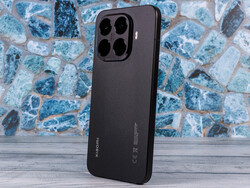
The Xiaomi 15T Pro impresses with a strong camera, brilliant display, and long battery life, but falls short of its full flagship potential due to the lack of LTPO, a slow USB port, and limited repairability.
Xiaomi 15T Pro
- 11/06/2025 v8
Daniel Schmidt
Alternatives at a glance
Image | Model / Review | Price | Weight | Drive | Display |
|---|---|---|---|---|---|
| Xiaomi 15T Pro Mediatek Dimensity 9400+ ⎘ ARM Immortalis-G925 MC12 ⎘ 12 GB Memory, 1024 GB | Amazon: 1. $6.59 Anoowkoa 3 Pack Designed for... 2. $10.79 Ibywind for Xiaomi 15T Pro 5... 3. $7.99 Suttkue for Xiaomi 15T Pro S... List Price: 1000€ | 210 g | 1TB UFS 4.1 Flash | 6.83" 2772x1280 447 PPI AMOLED | |
| Xiaomi Poco F7 Ultra Qualcomm Snapdragon 8 Elite ⎘ Qualcomm Adreno 830 ⎘ 16 GB Memory, 512 GB | Amazon: 1. $539.99 XIAOMI Poco F7 PRO 5G + 4G L... 2. $7.99 Suttkue for Xiaomi Poco F7 P... 3. $11.99 Ibywind For Xiaomi Poco F7 U... List Price: 800€ | 212 g | 512 GB UFS 4.1 Flash | 6.67" 3200x1440 526 PPI Flow AMOLED | |
| Samsung Galaxy S25+ Qualcomm Snapdragon 8 Elite for Galaxy ⎘ Qualcomm Adreno 830 ⎘ 12 GB Memory, 256 GB | Amazon: 1. $1,090.61 SAMSUNG Galaxy S25 Ultra, 25... 2. $805.12 SAMSUNG Galaxy S25 Edge Phon... 3. $1,015.00 SAMSUNG Galaxy S25 Ultra SM-... List Price: 1149 Euro | 190 g | 256 GB UFS 4.0 Flash | 6.70" 3120x1440 513 PPI Dynamic AMOLED 2X | |
| Nothing Phone (3) Qualcomm Snapdragon 8s Gen 4 SM8735 ⎘ Qualcomm Adreno 825 ⎘ 16 GB Memory, 512 GB | Amazon: $719.00 List Price: 899 Euro | 218 g | 512 GB UFS 4.0 Flash | 6.67" 2800x1260 460 PPI AMOLED | |
| Realme GT 7 Mediatek Dimensity 9400e ⎘ ARM Immortalis-G720 MP12 ⎘ 12 GB Memory, 512 GB | Amazon: 1. $10.79 Ibywind For Realme GT 7/GT 7... 2. $8.99 Suttkue for Realme GT 7 Scre... 3. $11.99 Ibywind for Realme GT 7 Pro ... | 206 g | 512 GB UFS 4.0 Flash | 6.78" 2780x1264 450 PPI OLED |
Transparency
The selection of devices to be reviewed is made by our editorial team. The test sample was provided to the author as a loan by the manufacturer or retailer for the purpose of this review. The lender had no influence on this review, nor did the manufacturer receive a copy of this review before publication. There was no obligation to publish this review. As an independent media company, Notebookcheck is not subjected to the authority of manufacturers, retailers or publishers.
This is how Notebookcheck is testing
Every year, Notebookcheck independently reviews hundreds of laptops and smartphones using standardized procedures to ensure that all results are comparable. We have continuously developed our test methods for around 20 years and set industry standards in the process. In our test labs, high-quality measuring equipment is utilized by experienced technicians and editors. These tests involve a multi-stage validation process. Our complex rating system is based on hundreds of well-founded measurements and benchmarks, which maintains objectivity. Further information on our test methods can be found here.




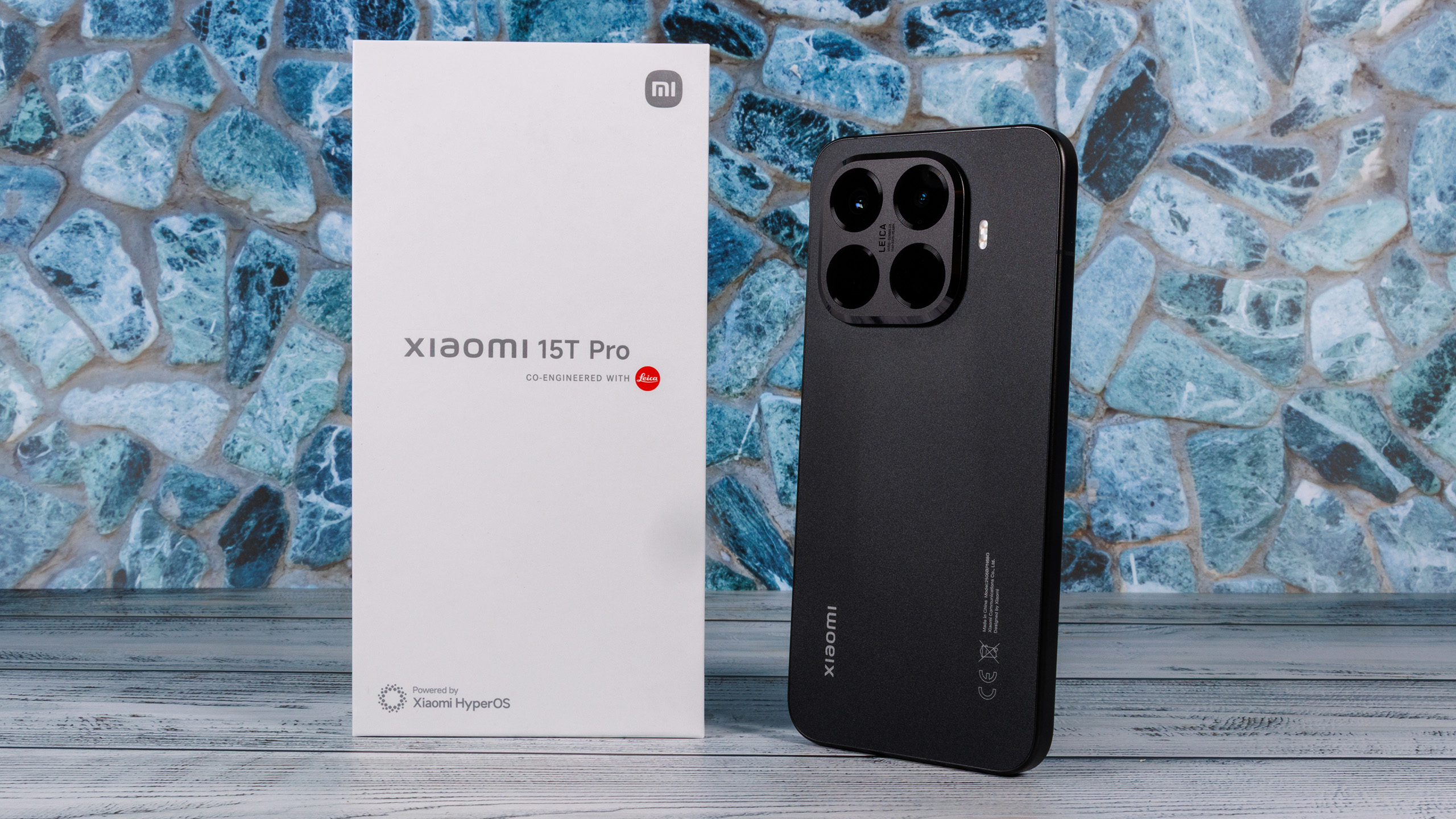

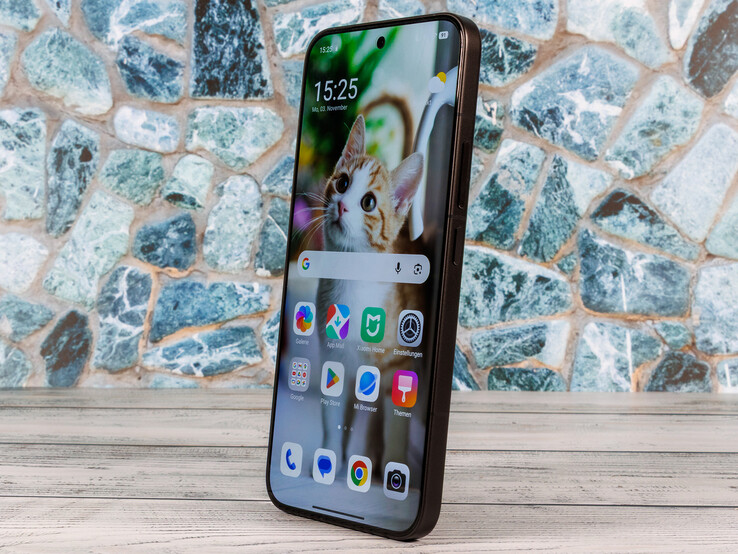








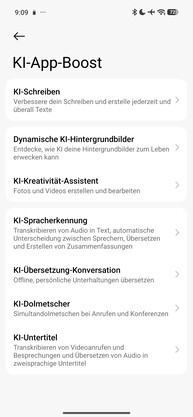











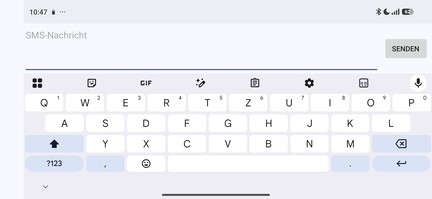












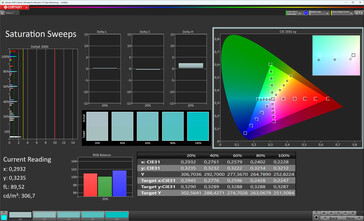
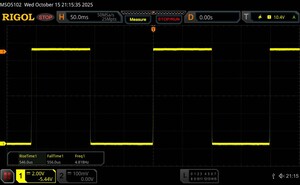
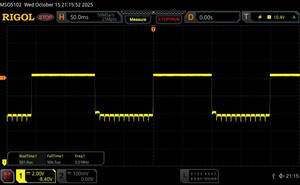


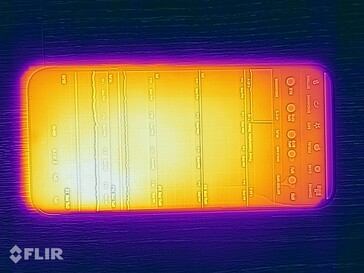

 Total Sustainability Score:
Total Sustainability Score: 





